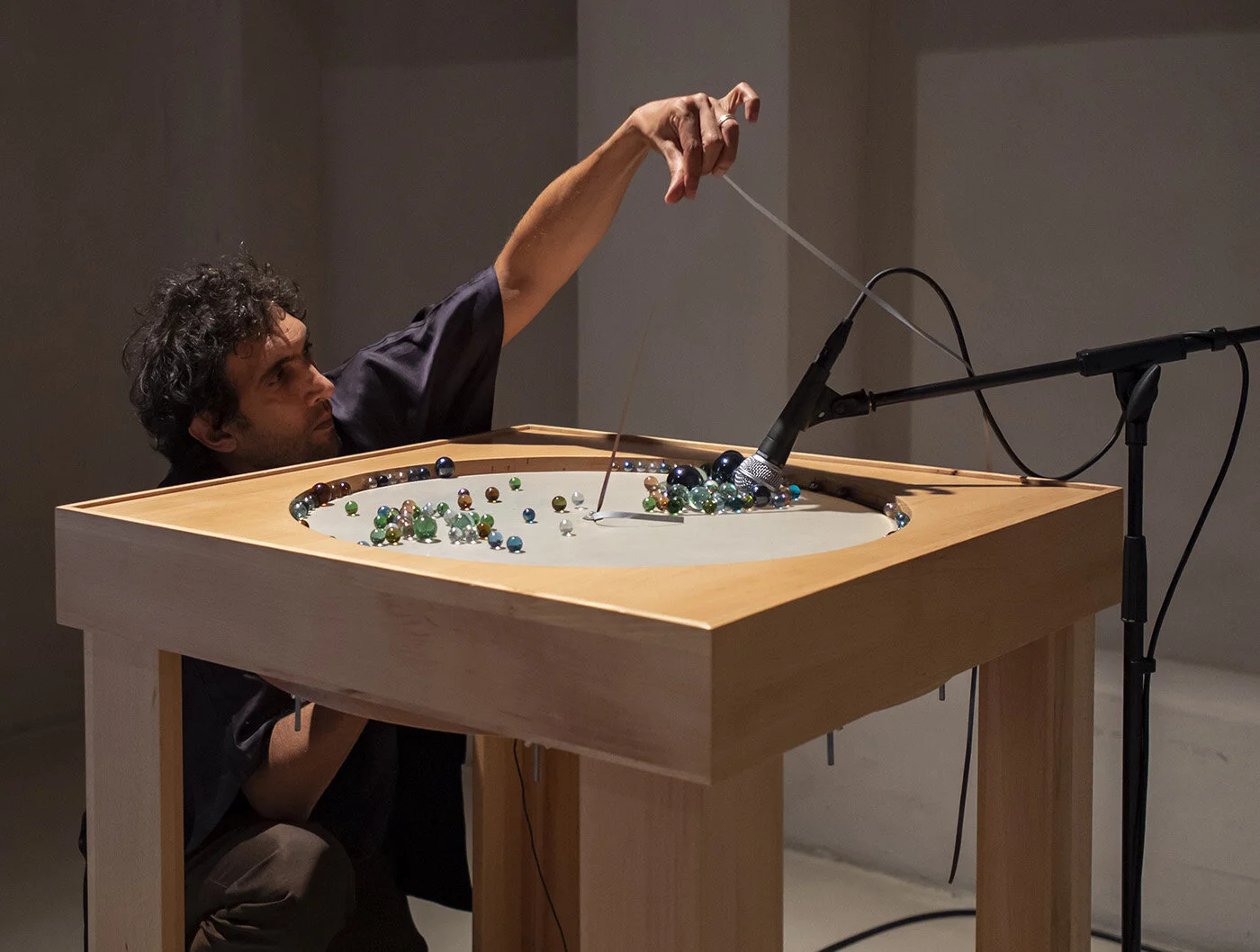Over the centuries, many feet have traversed the desert sands of the Arabian Peninsula. Some seeking sustenance, some seeking shelter and others seeking inspiration. Although the musings of these wanderers were mostly charted in poems passed down orally, their footprints have left an imprint of collective memory upon the modern Arab world.
Read MoreFor MORROW collective’s exhibition All-Seeing Eye, the following Q&A is part of a series of short artist interviews. The showcase was on September 28, 2023 at the exhibition’s partner space Seeing Things on Alserkal Avenue, paired with a drop on Foundation.
Read MoreWhen art historian, critic, and curator Valeria Ibraeva visited Latifa Saeed’s Dubai studio in January, she told the Emirati artist that she wanted to bring her work to Almaty for a solo exhibition that would showcase its breadth and diversity. In June, Saeed’s show A Black Silhouette opened in the city’s Almaty Gallery with a collection of nine distinct bodies of work from 2013 to today. It was her first solo and the first time an Emirati has exhibited a solo show in Kazakhstan. The exhibition paid credit to Saeed’s evolution as an artist and designer whose experimental approach covers fine art, graphic design, advertising, branding, and product design.
Read MoreLabels are something singer Emel Mathlouthi has tried to avoid—but not always successfully. Activist. Revolutionary. Protest singer. Role model.
Born in the suburbs of Tunis and raised during the long rule of President Zine El Abidine Ben Ali, it is lore that Mathlouthi rose to prominence with a powerful song that became the soundtrack to Tunisia’s Jasmine Revolution, which ignited a fire that spread along the North African shore. ‘Kelmti Horra’ (‘My Word is Free’), based on lyrics by Tunisian poet Amine Al Ghozzi, changed Mathlouthi’s career.
Read MoreSawsan Al Bahar’s father raised her with music. “There was never a moment without music playing in our house. I grew up listening to a rich spectrum: songs by superstars and obscure musicians, songs known to all and songs known to nobody,” she says. But it was songs by Arab music’s pioneers that captured her heart. Richly lyrical numbers taught her—yearning, nostalgia, love, joy, pride, protest, celebration, mourning, and humour. Now the Damascus-born, Dubai-based artist presents an exhibition at Maraya Art Centre in Sharjah, which charts her life through 33 songs, a track for each year.
Read MoreLunging, jumping, and vaulting, dance masters demonstrate capoeira, inviting onlookers in Sharjah’s Arts Square to join them. Few will have guessed that the 60-something man in loose white trousers and a light pink T-shirt, part of the crowd, was the artist Hassan Hajjaj. He organised the workshop as part of Sharjah Biennial 15 in February as a way to engage the public with his documentary Gnawa Capoeira Brothahood (2023). A deeply personal project that took two decades to come to fruition, it traces the historical similarities between Gnawa, a Moroccan performance art rooted in Sufi music, and the Afro-Brazilian martial art of capoeira.
Read MoreInspired by desert rose crystal forma- tions, Moufida Mohideen designed a sculptural bookcase, titled Ascension, as a symbol of everlasting growth. Mohideen, a student of interior archi- tecture and design at the University of Sharjah, used contrasting raw materials—damas wood and mother of pearl—for the design, which won the ninth edition of the Van Cleef & Arpels Middle East Emergent Designer Prize.
Read MoreTarek Atoui is a visual artist and musician interested in the corporal experience of sound and listening. He has collaborated with Sharjah Art Foundation for more than a decade, culminating in Cycles in 11, his first institutional exhibition.
Read More







